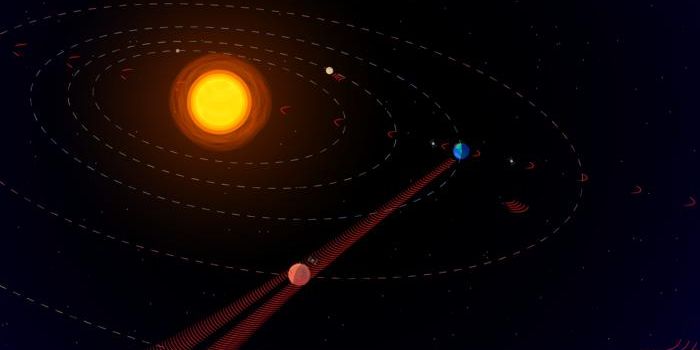Astronomers Capture the Formation of a Young Exoplanet
The mechanisms responsible for planetary formation have captivated astronomers for as long as we can remember, but a newly-captured image of a distant star system depicts an exoplanet’s formation in unprecedented detail and sheds light on this fascinating process.
Image Credit: ESO/A. Müller et al.
Researchers from the Max Planck Institute for Astronomy in Germany snapped the image above with the SPHERE instrument on the European Southern Observatory’s Very Large Telescope (VLT) in Chile. A paper published in the journal Astronomy and Astrophysics this week describes what’s really happening inside the frames.
The dark spot at the center of the system is a star dubbed PDS 70, and it resides about 370 light years away from our planet. A protoplanetary disk surrounds the star, but you’ll also notice a bright spot just below and to the right of it; that’s supposedly the soon-to-be exoplanet.
Related: This binary star system sports 3 misaligned planet-forming disks
PDS 70 is around 5.4 million years old, and while that might seem ancient to us, that’s actually rather infantile on the astronomical time scale. The Sun, for comparison, is about 4.6 billion years of age.
The exoplanet forming in orbit around PDS 70 appears to be a gas giant just like Jupiter, but with significantly more mass. Furthermore, it sits about as far away from PDS 70 as Uranus does from the Sun, and yet it sports a scorching-hot surface temperature of almost 1000º Celsius.
“These discs around young stars are the birthplaces of planets, but so far only a handful of observations have detected hints of baby planets in them,” explained study lead author Miriam Keppler from the Max Planck Institute for Astronomy.
“The problem is that until now, most of these planet candidates could just have been features in the disc. The advantage of our detection is that we have detected the new planet with several different observing instruments, different filter bands and different years.”
Related: 'Dust' traps might make planetary formation possible
Although astronomers have imaged potential exoplanets during formation before, this is one of the unique cases in which they used more than one method to validate one. That said, it would be difficult to dispute its existence, which can’t always be said for other findings.
Astronomers will undoubtedly revisit PDS 70 in the future to better understand how the planetary formation process works, and it should be interesting to consider what we might learn from additional research.
Source: ESO









